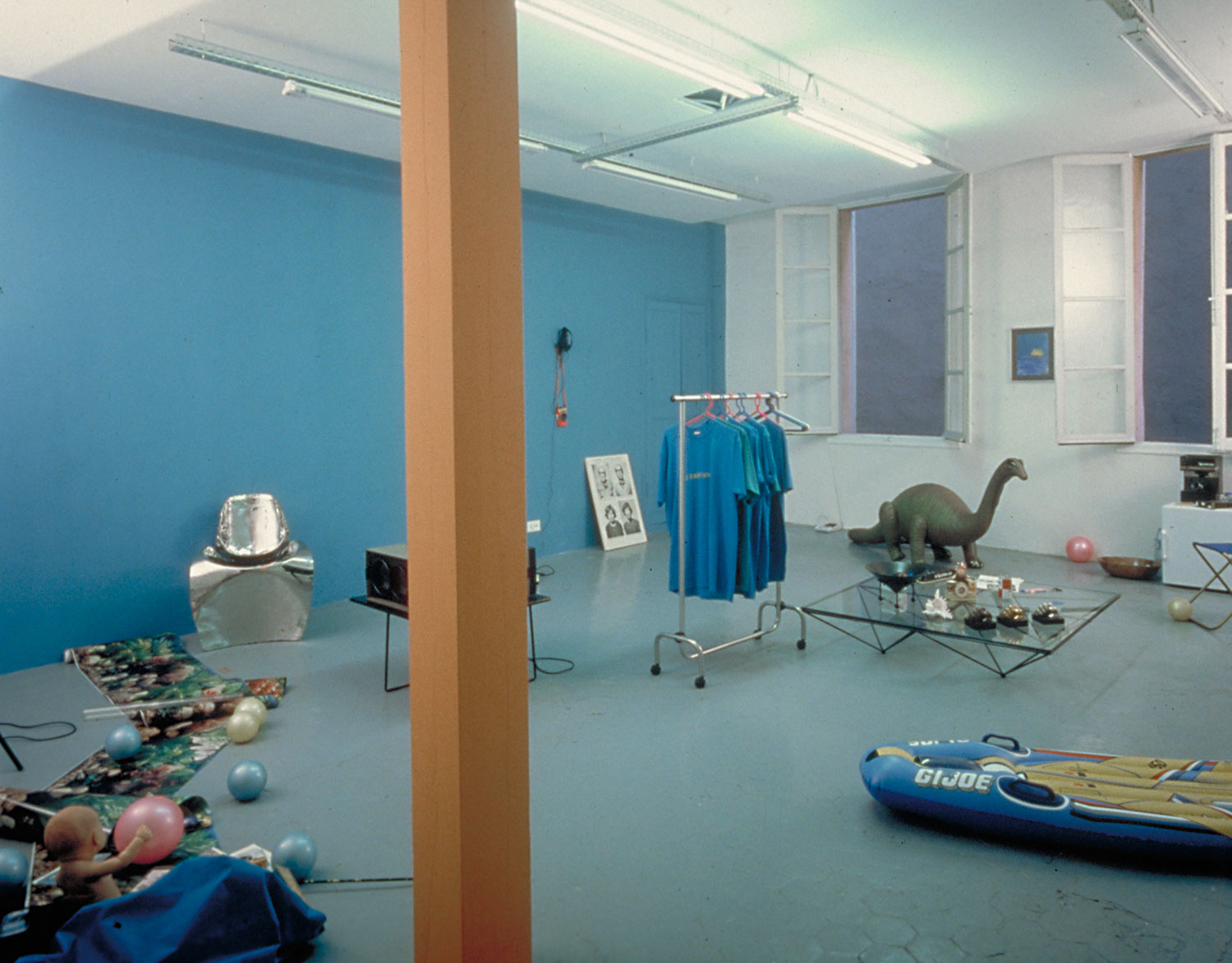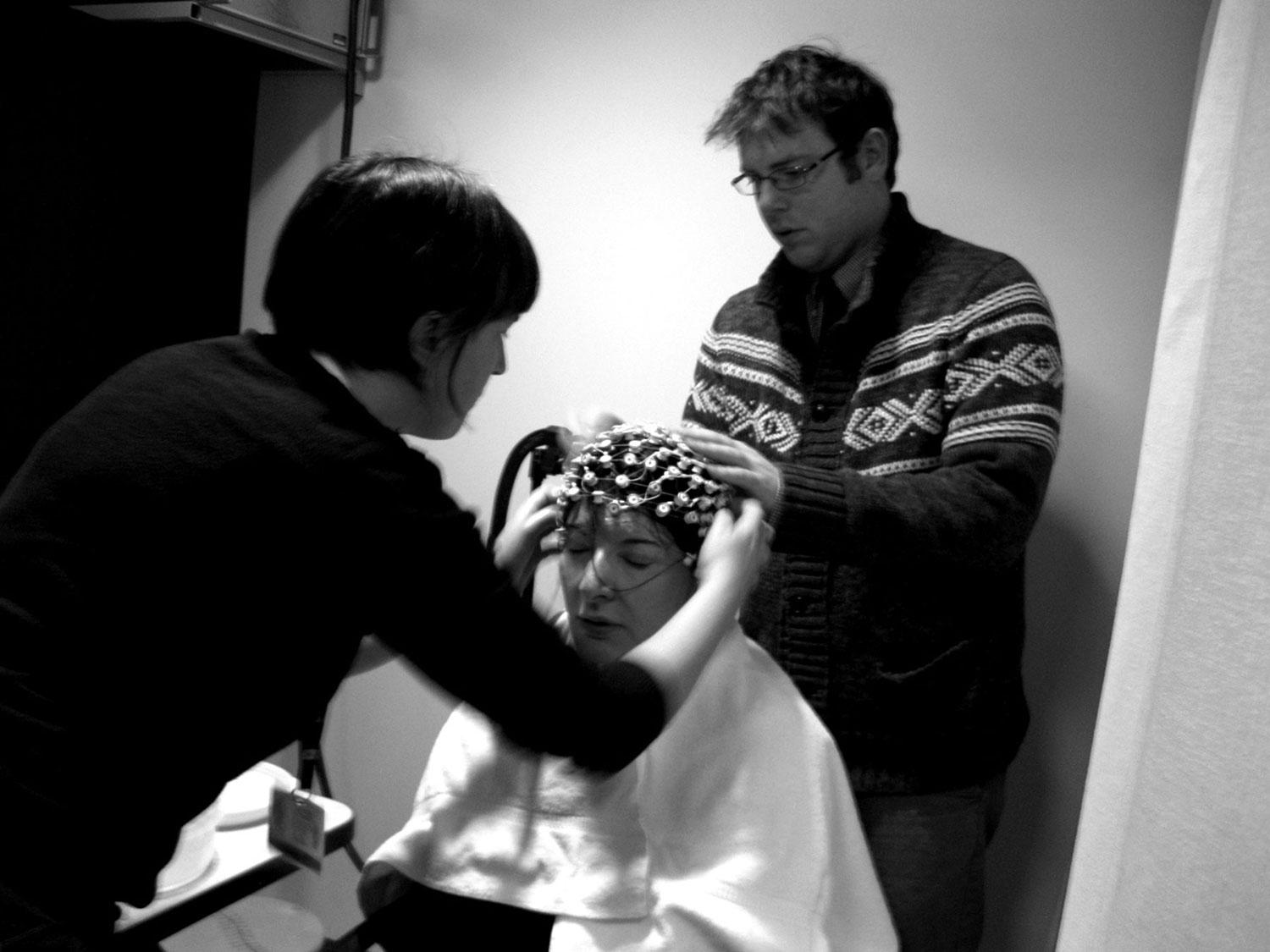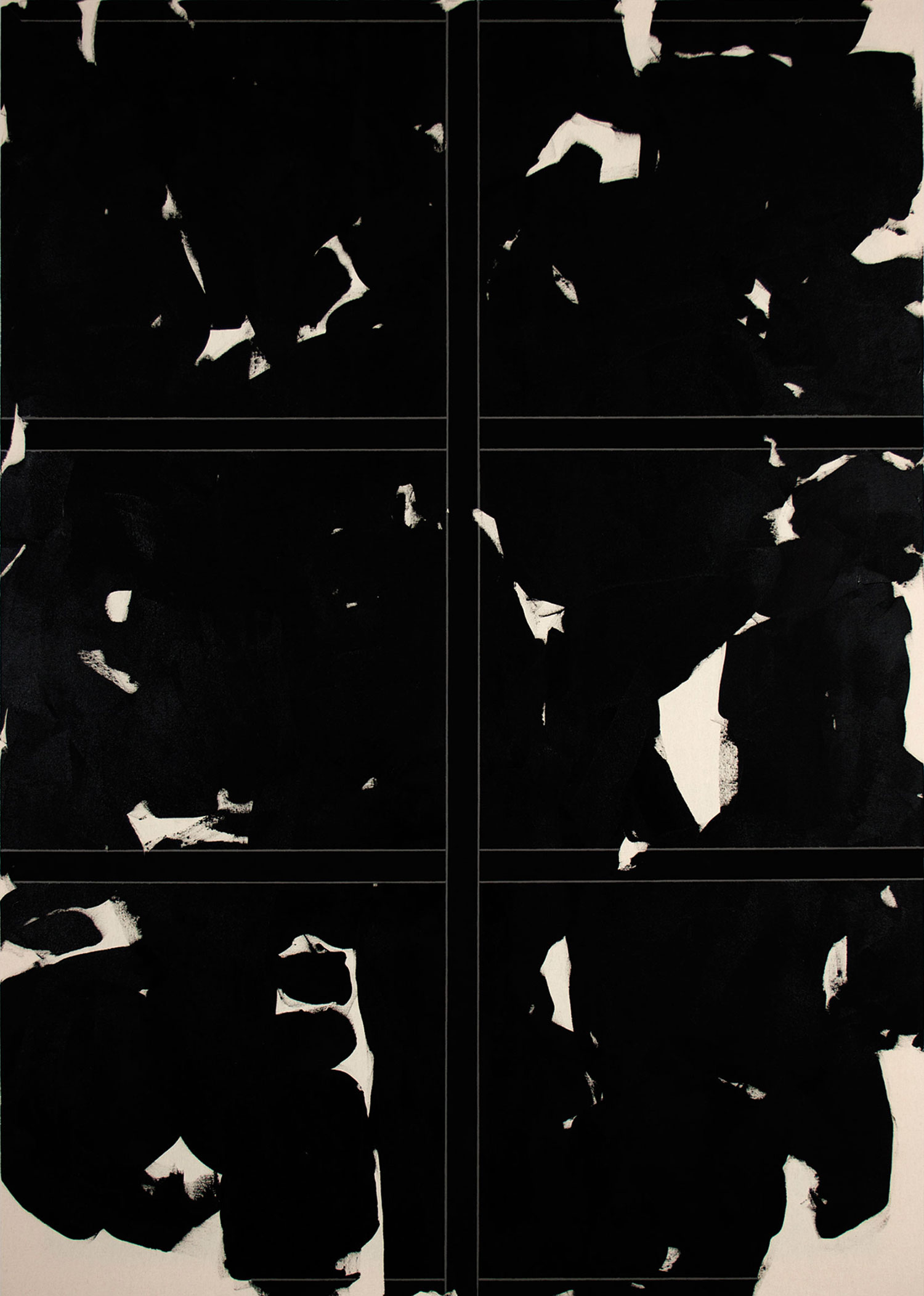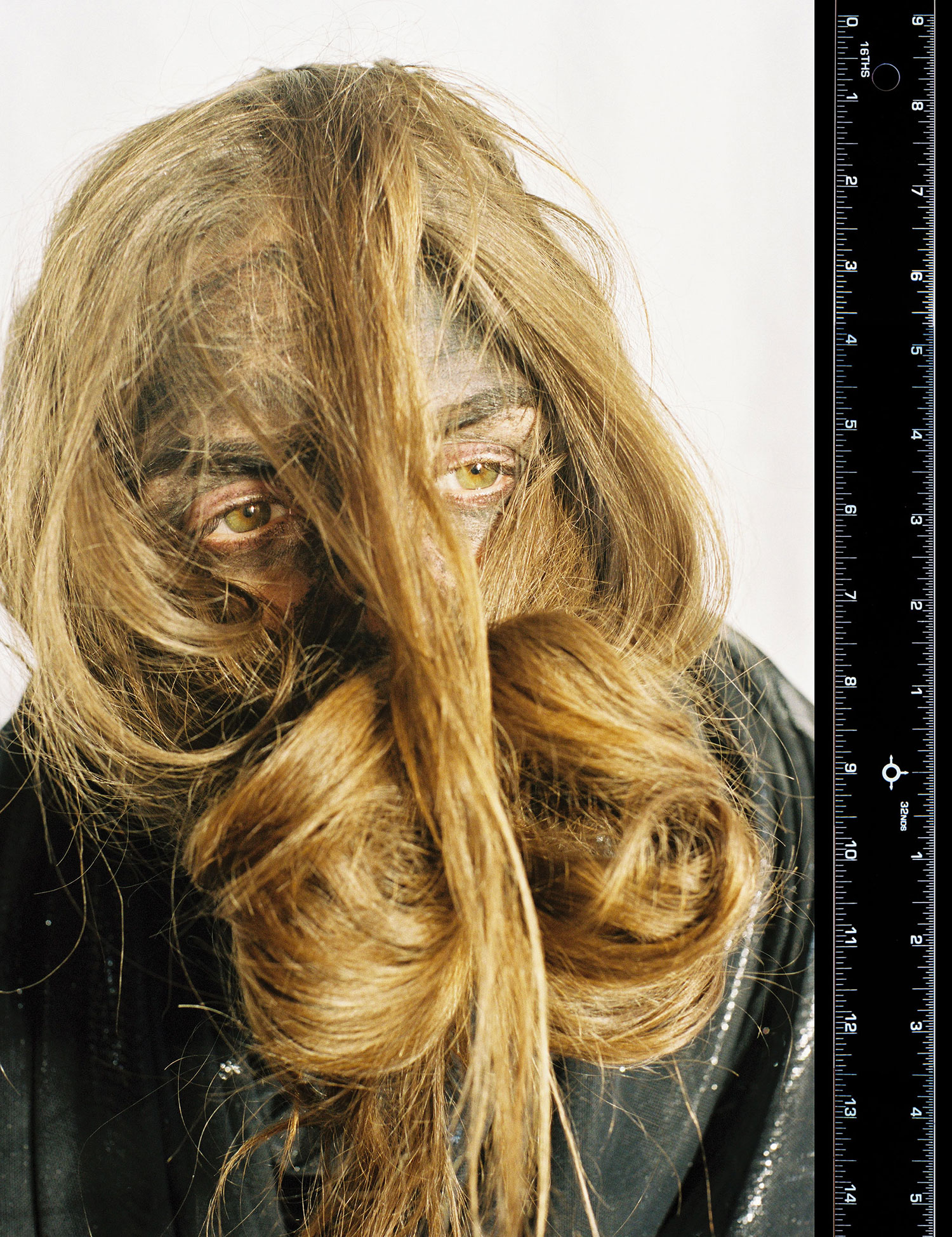
February 23, 2011, would have been John Latham’s 90th birthday. There was a little gathering at his house, Flat Time House (FTHo), to celebrate and to unravel The, a roller painting he made in 1976. The has just been fitted with a new motor and transformed from inert hanging canvas back into the kinetic painting it once was — a literal action painting. The is a score, played out like the notes of a tin music box as its pins roll over the turning cylinder. Like a musical score it exists, in its entirety, all the time, but is experienced by a viewer only as it is activated in time; specifically the time it takes for the canvas to pass over the rolling cylinder and reach the floor.
The is one of many works by the artist that have been overlooked in the last few decades but which are now being dusted off and reanimated. It dates from a period when Latham was a hugely productive and energetic force in the development of conceptual art in the UK. Latham’s students and peers from the ’60s and ’70s, including Barry Flanagan, Ian Breakwell, David Lamelas and John Stezaker, have acknowledged his influence, and he is an increasingly relevant figure for younger artists. Of course, he never actually went away — he was making work right up until he died in 2006 — but while his object-based artworks are preserved in memory and museum collections, his big contribution to conceptual and time-based practices during the middle decades of the 20th century has perhaps been obscured by the passing of time.
The is a large canvas with stenciled letters set out in a grid, attached along its upper edge to a mechanized roller. It can be viewed from front and back, but either way the grid of upside-down letters is near impossible to form into words until the canvas is in motion. When its bands of letters roll over the front of the barrel, you can read them, not horizontally — the roller turns too fast to read across the lines — but vertically. Each column begins with the letter “h”; each statement stems from the same root before branching off. John A. Walker, in his 1994 monograph John Latham: The Incidental Person: His Art and Ideas, suggests that the artist used these bands of text to describe multiple fields of knowledge that possess a common origin, but divergent histories thereafter. Latham was concerned with the way in which each discipline develops its own specialist language, eventually rendering itself incommunicable to the next. In order to wring any meaning from the roller’s text, the viewer must “specialize,” adopting a tunnel vision to follow a narrow line of enquiry, which inevitably comes at the expense of an understanding of the whole event.
“Hot connys laid up in Hong Kong??? Hokum a shaver beg onion????????? How come ewes ate a half ton mum?” Each line of text is an attempt to articulate the existential question that, through crude and comic sound-alike variations, recurs like a refrain over the course of Latham’s career, in his artworks and his writings: “What can we say to be going on?” The title The offers a kind of answer, and as John A. Walker writes, it “was derived from… the last word in James Joyce’s novel Finnegans Wake; a word pregnant with infinite possibilities.”
Like much of his work from this period, the roller has the look of conceptual art but, despite the shared aesthetic, Latham was attempting to articulate something quite different to his peers. Since the mid-1950s he had been developing his theory of a time-based universe. Time-Base Theory (Latham also used the terms Event Theory and Flat Time) describes an event-structured universe in which every phenomenon can be organized within a time-based spectrum; from an event of least duration at the short end of the scale, to the whole universe at the other. Between these two points the physical, metaphysical and para-psychological can be understood within the same system, something that modern science cannot accommodate due to its extreme levels of specialization. As a human being — a body event — the higher your “center of gravitas” on the spectrum the more perspective you have on “what’s going on,” because you see a bigger part of the whole picture. Latham considered the space-based alternative to be automatically divisive because it is constructed from isolated objects and matter. Language is an instrument of the object-based universe because it is structured around nouns. He developed the term “noit” as a challenge to this: as a reversal of the suffix “tion,” which creates a noun from a verb, the noit was a way to activate the noun and have it exist in time.

Latham frequently spoke of the origins of his theory in the home of two friends, the scientists Clive Gregory and Anita Kohsen, who asked Latham to make a mural for a Halloween party in 1954. Feeling that a brush painting wasn’t quite the thing, Latham searched for a more suitable means of production and came up with a household spray gun. The resulting instantaneous spatter of black on a white surface was a revelation; the distributed spots of ink were pleasingly simple as a representation of a fixed moment in time, but the same image could simultaneously connote the cosmos represented in negative; infinite complexity from extreme simplicity of means. The spray gun became a very important tool for Latham from that point. Early spray paintings were worked up with figurative elements, floating hands and feet or full human figures with titles such as Sleep (1955) or Man Caught Up with a Yellow Object (1954) suggestive of their subject matter. By 1970 Latham returned to the minimalism he had admired in his original action (he called it the Idiom of ’54) and presented the spray gun paintings as a series of “noits” or “One-Second Drawings” (1970-77). These were completely unmediated blasts of sprayed ink onto simple white surfaces, sometimes painted board, sometimes standard sheets of printer paper.
A few years after the spray gun discovery, Latham was introducing assemblage elements into his work. One day, just looking for an oblong form, a book came into view in the studio and he used it. Books immediately provided an easy symbolism for both language and knowledge, particularly an institutionalized, top-down knowledge, congealed in the form of reference books and leaving little scope for independent thought. Great Uncle Estate (1959-60), a major work from this period, even provided a composite character representing the whole western canon. The work is Latham’s largest book relief, with around 100 books placed onto the canvas surface, their pages painted red, blue, gold or gray, with adjustable wires to hold the pages apart, allowing for the transformation of the canvas according to which pages are on view.
Books were the subject of Latham’s several “skoob films” he made from 1959 to 1960 (“skoob” is another reversal: “books” spelled backwards). These are stop-frame animations of his book-relief canvases transforming frame by frame in a flicker as the books’ pages are turned between shots. A few years later they became the raw material for radical actions including the Skoob Tower Ceremonies (1964-68; 1996-1998) during which towers of books were formed into slow-burning chimneys and incinerated at symbolically loaded locations including the British Museum and the London Law Courts.
My own relationship with John Latham and his work began at school with a teacher who had studied at Central Saint Martins. My teacher retold, as I’m about to, the stock story of Still and Chew/Art and Culture (1966-67). I say “story,” as the episode passed into legend some time ago. Aided by his student Barry Flanagan, Latham invited his Saint Martins students to his home for a party. A library copy of Clement Greenberg’s Art and Culture (1961) was passed around; everyone tore out a page, chewed it up and spat it out. Latham then fermented the mulch for nearly a year, before returning the resulting distilled liquid to the college library in a glass phial labeled “essence of Greenberg” (the ubiquitous Greenberg was an agent of Great Uncle). As well as being an effective way to gain the attention of impressionable art students (over four decades and still going strong), Still and Chew/Art and Culture was a touchstone in Latham’s career, summing up not only his problems with language and institutionalized education, or the “Mental Furniture Industry” as he termed it, but also the role of process in his work and the effects of time upon materials and perception. It was also an expression of the radicalism that would relegate him as an outsider and troublemaker.

Some time after that first encounter with Still and Chew/Art and Culture I met John, and later still I worked at his home FTHo. On reflection, it is Flat Time House that is Latham’s largest book-relief, not Great Uncle Estate; the house has a Face, the large shop window of which is punctuated by two giant books, their pages layered together — another technique of Latham’s for rendering a book unreadable. The spine of one book bears the title How the Univoice is Still Unheard; the “univoice” would be Flat Time as a unifying “theory of everything.” Like many of Latham’s later book reliefs, the two books extrude from a glass plane, in this case the window. Glass was the last of Latham’s three primary materials, with the glass plane replacing a white ground in most of his work from the ’80s onward. As a state zero from which human history evolves, transparent glass was even more effective than unmarked canvas. Beyond the glass membrane of the Face, Latham thought about the house as an organism. He called it a living sculpture; each of its rooms has a function. The very first room, behind the book-relief, Latham called the Mind, and this was where he would talk to visitors about his theoretical ideas. The works in this room are like demo versions of works expressing the most persistent themes of Latham’s work since the ’50s. All his big ideas are here as well as all his major materials (books, canvas, glass, the spray gun) in miniature form: a cosmology in a microcosm.
The house also has a Brain, the location for office and archive and rational thought (as opposed to intuitive thinking, which happens in the Mind). A corridor leads to the skylit studio at the back of the house. This forms the part of the house that is now public, and it horseshoes around the Body Event: the kitchen, bedroom and bathroom, where “sitting, lying and plumbing” happen. For a while, I was the body inhabiting the Body Event. Now, whenever possible, there will be an artist living there. So far Laure Prouvost and Bea McMahon have inhabited the Body of FTHo.
Like the statements on the roller, there are many divergent ways in which one could introduce Latham’s work or try to sum up his achievements. When the artist attempted to do this himself, he would invariably start in 1954 with the spray gun, but you would end up somewhere different every time. Despite the incredible diversity in his work, there’s an extraordinary and highly unusual constancy to it, which springs from the ubiquity of his theoretical ideas. Constancy, but not necessarily clarity; the very same artists who have cited Latham as an important influence have often, in the very same breath, declared their lack of understanding of the ideas that underpinned his practice. Nicholas Logsdail, Latham’s gallerist for 40 years, likes to recount how Art & Language came to see a Latham show at Lisson Gallery in 1970. They told Logsdail that they thought Latham was a genius, but they didn’t understand a word he said. Such a contradiction begs the question, hatpin to shave of a ding-dong?





